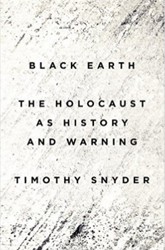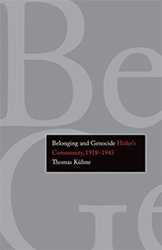By
– September 1, 2011
In 1983, as part of the Altruistic Personality Project, social scientists Samuel Oliner and Kathleen Lee interviewed Wilhelm and Cecile Bachner in California. They were of interest to Oliner and his team, authors ultimately of the significant study, The Altruistic Personality Rescuers of Jews in Nazi Occupied Europe (1988), that has contributed greatly to our understanding of moral courage during the Holocaust, because the researchers assumed they had been rescued by non-Jews. It soon became clear that Bachner had not been saved by the assistance of others but was one of that small group of Jews who had not only survived but managed to save many others.
Wilhelm Bachner was born in an Austrian section of Poland and grew up speaking flawless German. He obtained an engineering degree from a German university and moved his family to Warsaw not long before the German invasion of Poland in September, 1939. He and his wife and parents were resettled in the Warsaw Ghetto. This extraordinary book, which reads like an adventure novel, recounts how Bachner posed as an Aryan, escaped the ghetto and found work with a German engineering firm heading a crew of construction workers. While passing as an Aryan German, he was able to hire dozens of Polish Jews as workers under his direction and supply them with false identity papers. He saved over 50 people from certain death, most of whom survived the war.
Drawing on interviews with family members, the people rescued, and archival sources on the Reichsbahn, the German railroad and the rail-based construction unit where Bachner worked, the authors have produced an inspiring narrative (now available in paperback) that is full of drama, suspense, and compelling evidence to help correct the myth of Jewish passivity during the Shoah. In recent years more and more examples of Jewish resistance have been described, producing a more balanced and nuanced picture of Jewish responses. The Bachner story is further evidence that if the opportunity came, many Jews seized it and attempted to hide, resist, and help their fellow victims avoid annihilation. Because of Wilhelm Bachner dozens of Jews and their future progeny were able to rebuild their lives in Germany, Brazil, Israel, Australia, Mexico, England, Canada, and the United States. The book is a fitting tribute to this hero of the Holocaust.
Wilhelm Bachner was born in an Austrian section of Poland and grew up speaking flawless German. He obtained an engineering degree from a German university and moved his family to Warsaw not long before the German invasion of Poland in September, 1939. He and his wife and parents were resettled in the Warsaw Ghetto. This extraordinary book, which reads like an adventure novel, recounts how Bachner posed as an Aryan, escaped the ghetto and found work with a German engineering firm heading a crew of construction workers. While passing as an Aryan German, he was able to hire dozens of Polish Jews as workers under his direction and supply them with false identity papers. He saved over 50 people from certain death, most of whom survived the war.
Drawing on interviews with family members, the people rescued, and archival sources on the Reichsbahn, the German railroad and the rail-based construction unit where Bachner worked, the authors have produced an inspiring narrative (now available in paperback) that is full of drama, suspense, and compelling evidence to help correct the myth of Jewish passivity during the Shoah. In recent years more and more examples of Jewish resistance have been described, producing a more balanced and nuanced picture of Jewish responses. The Bachner story is further evidence that if the opportunity came, many Jews seized it and attempted to hide, resist, and help their fellow victims avoid annihilation. Because of Wilhelm Bachner dozens of Jews and their future progeny were able to rebuild their lives in Germany, Brazil, Israel, Australia, Mexico, England, Canada, and the United States. The book is a fitting tribute to this hero of the Holocaust.
Michael N. Dobkowski is a professor of religious studies at Hobart and William Smith Colleges. He is co-editor of Genocide and the Modern Age and On the Edge of Scarcity (Syracuse University Press); author of The Tarnished Dream: The Basis of American Anti-Semitism; and co-author of The Nuclear Predicament.




